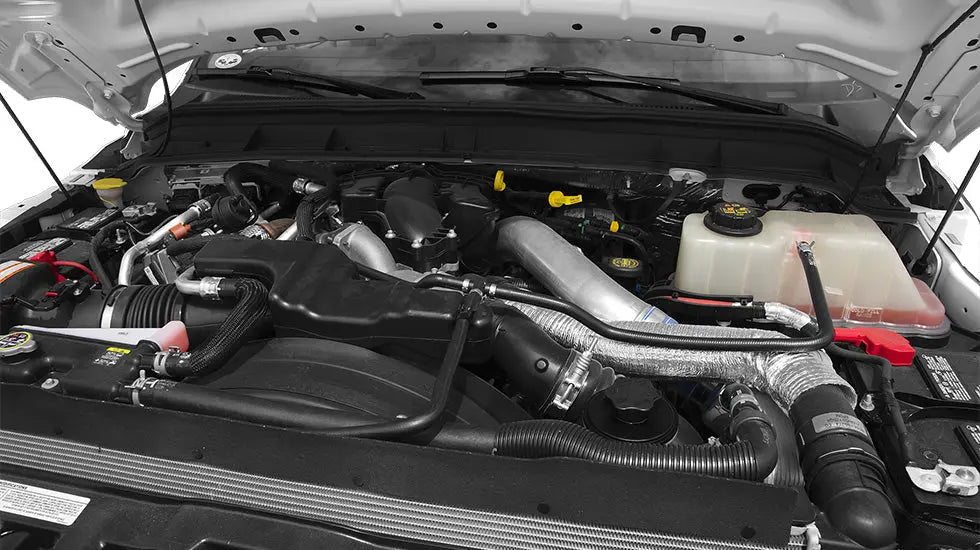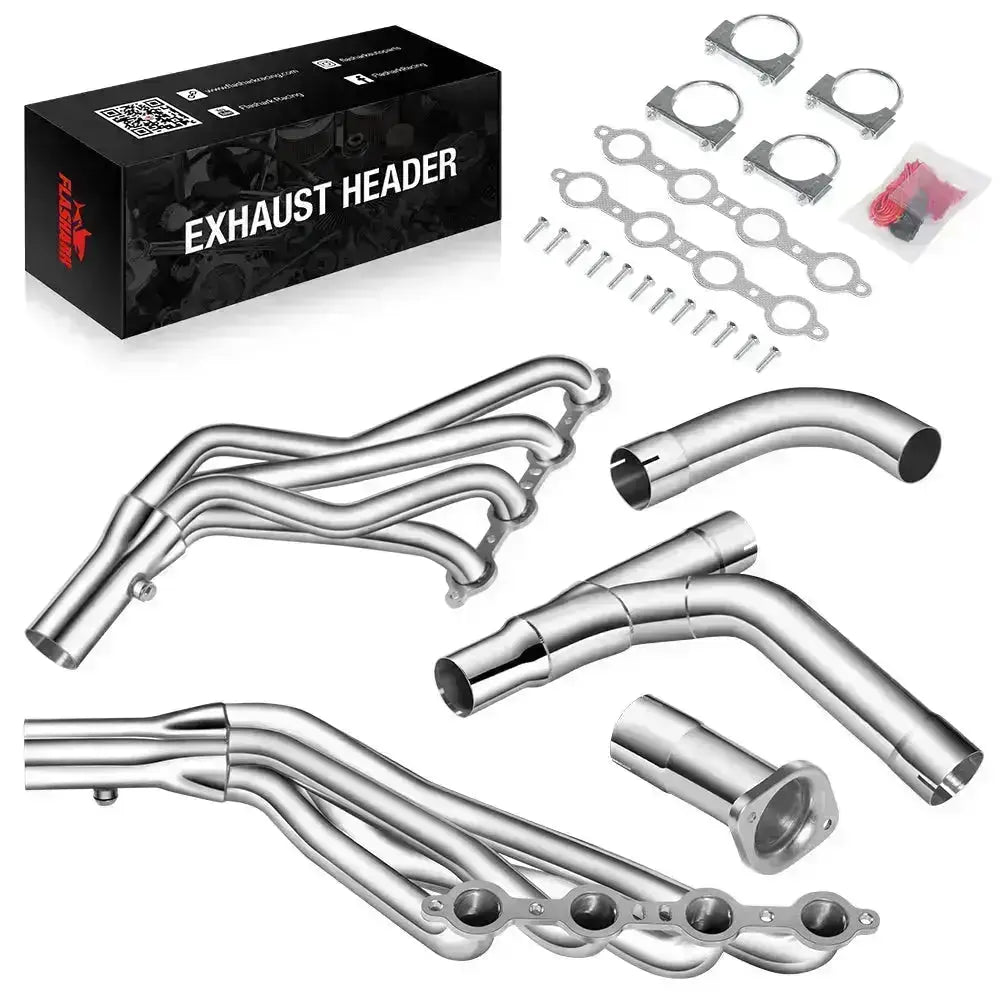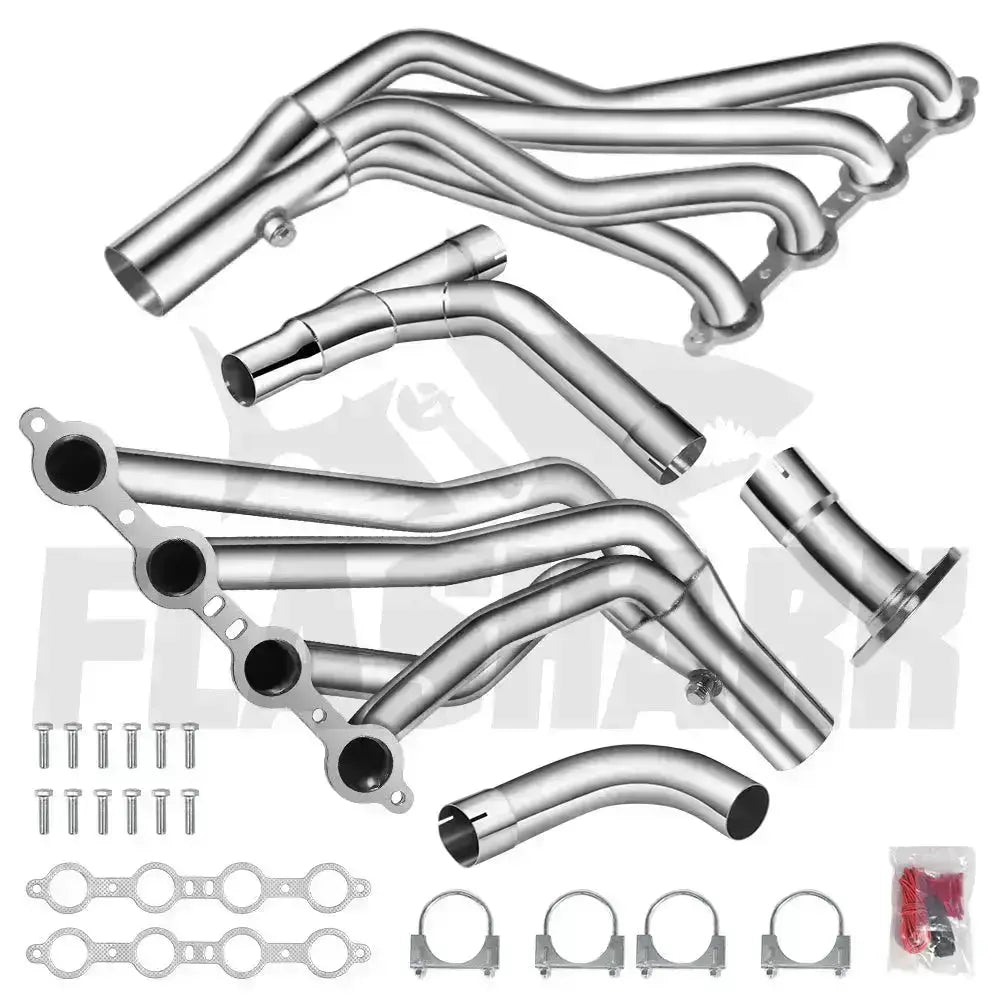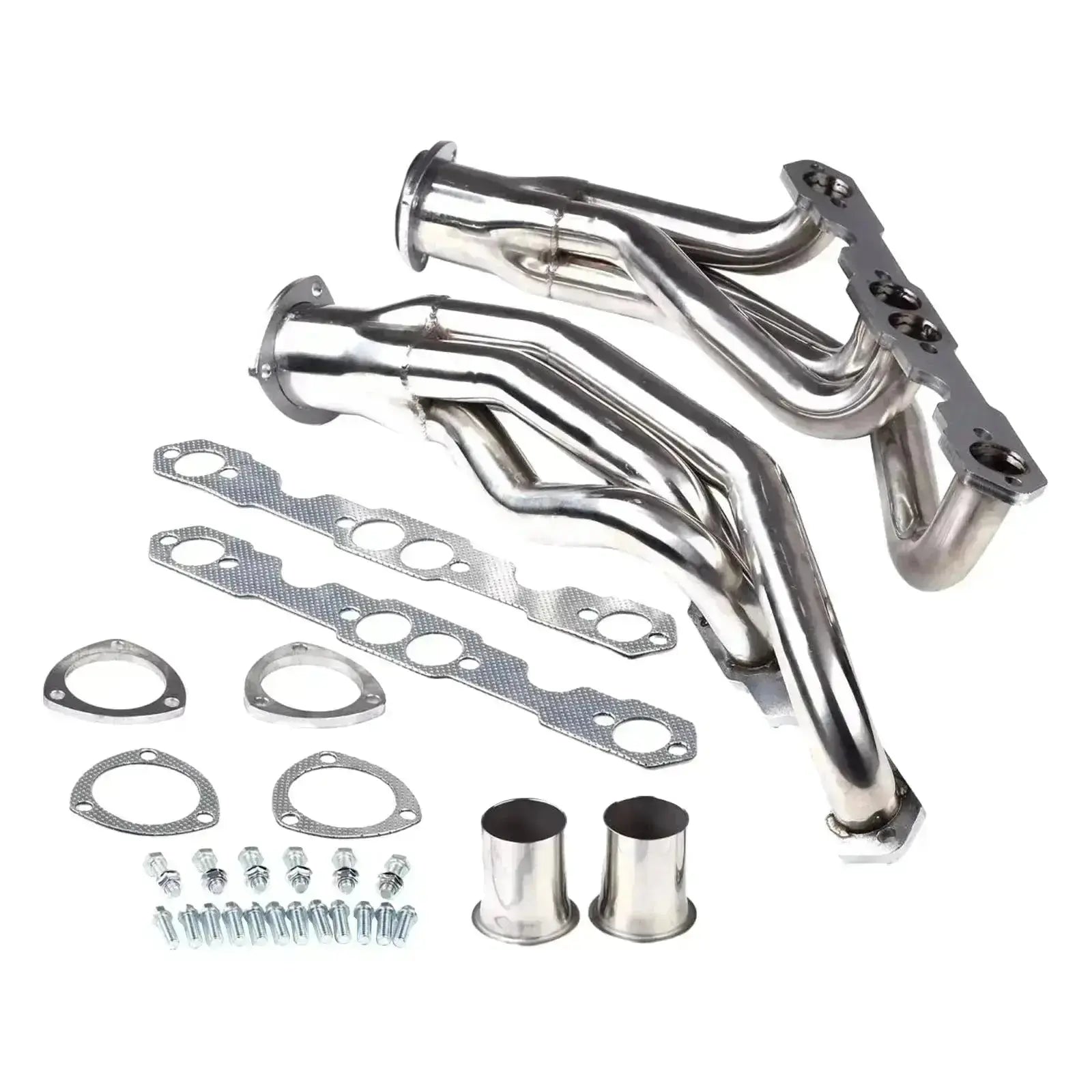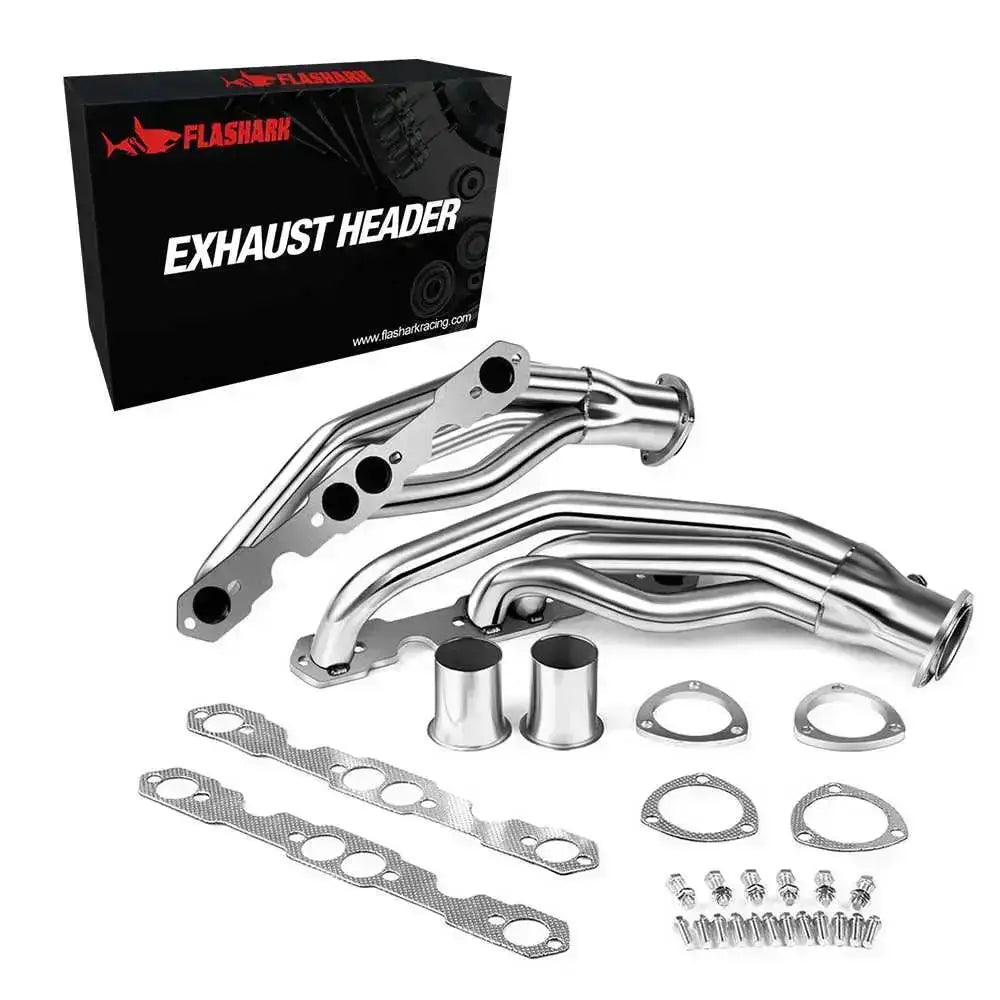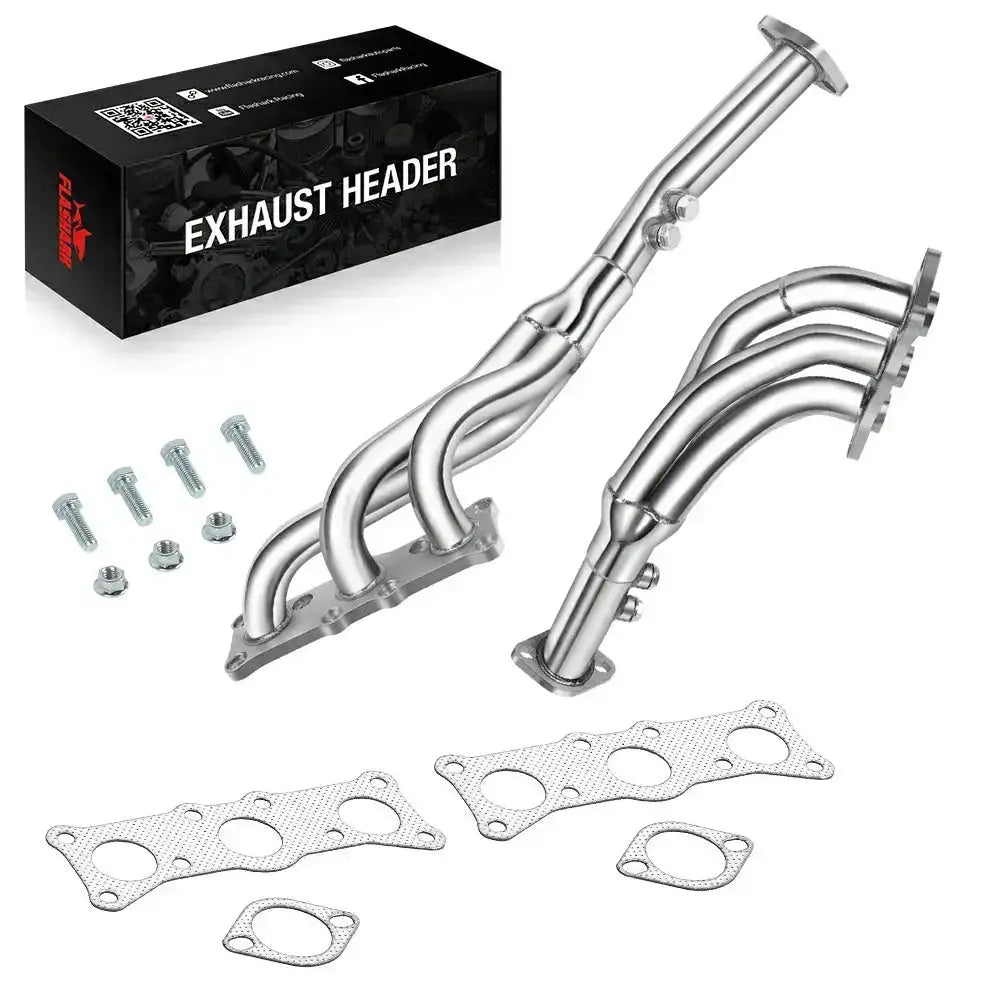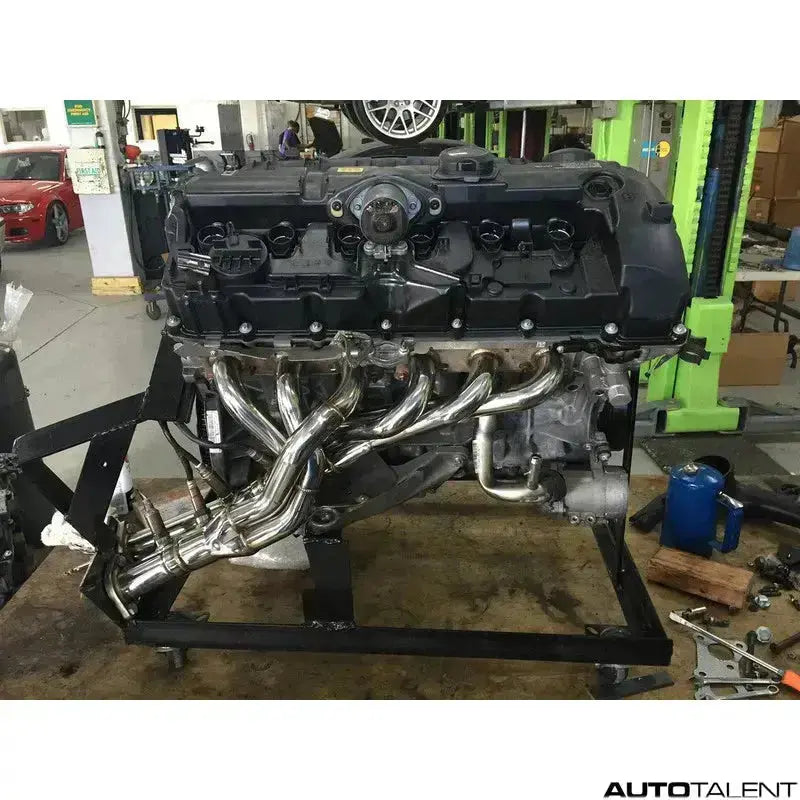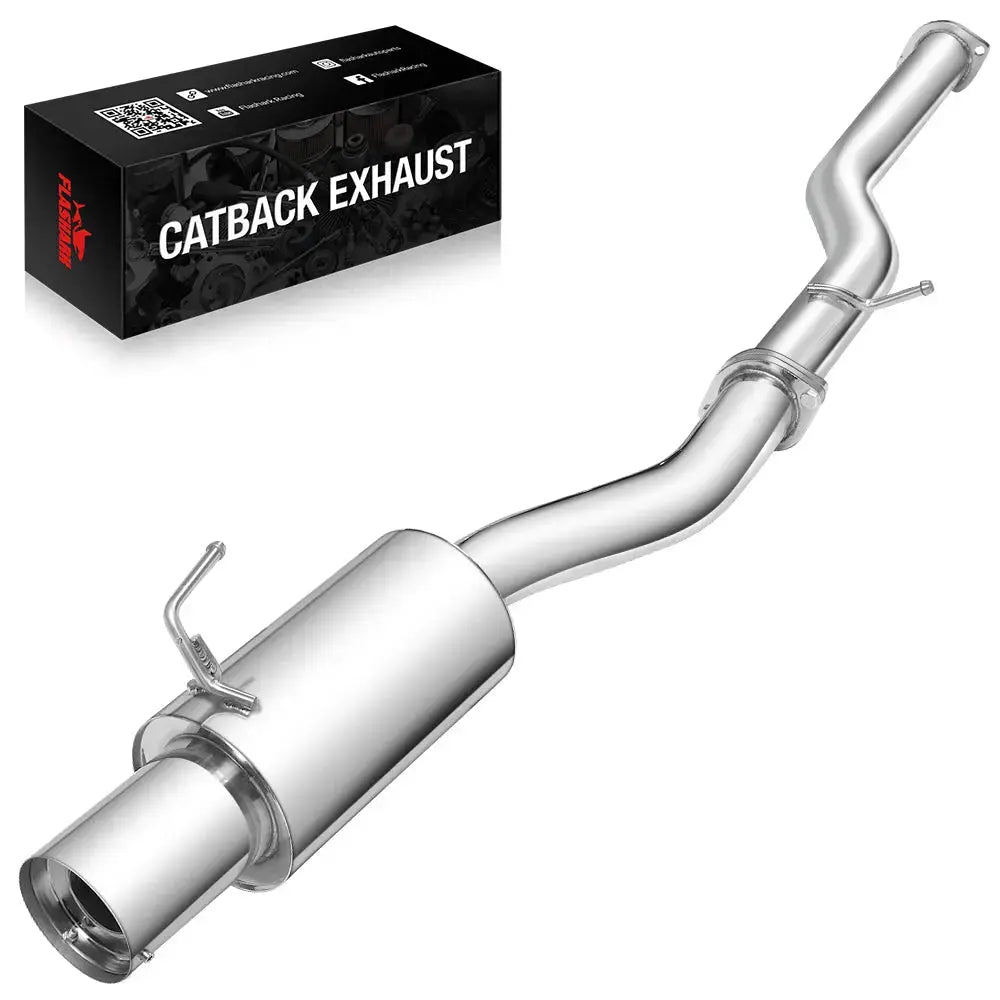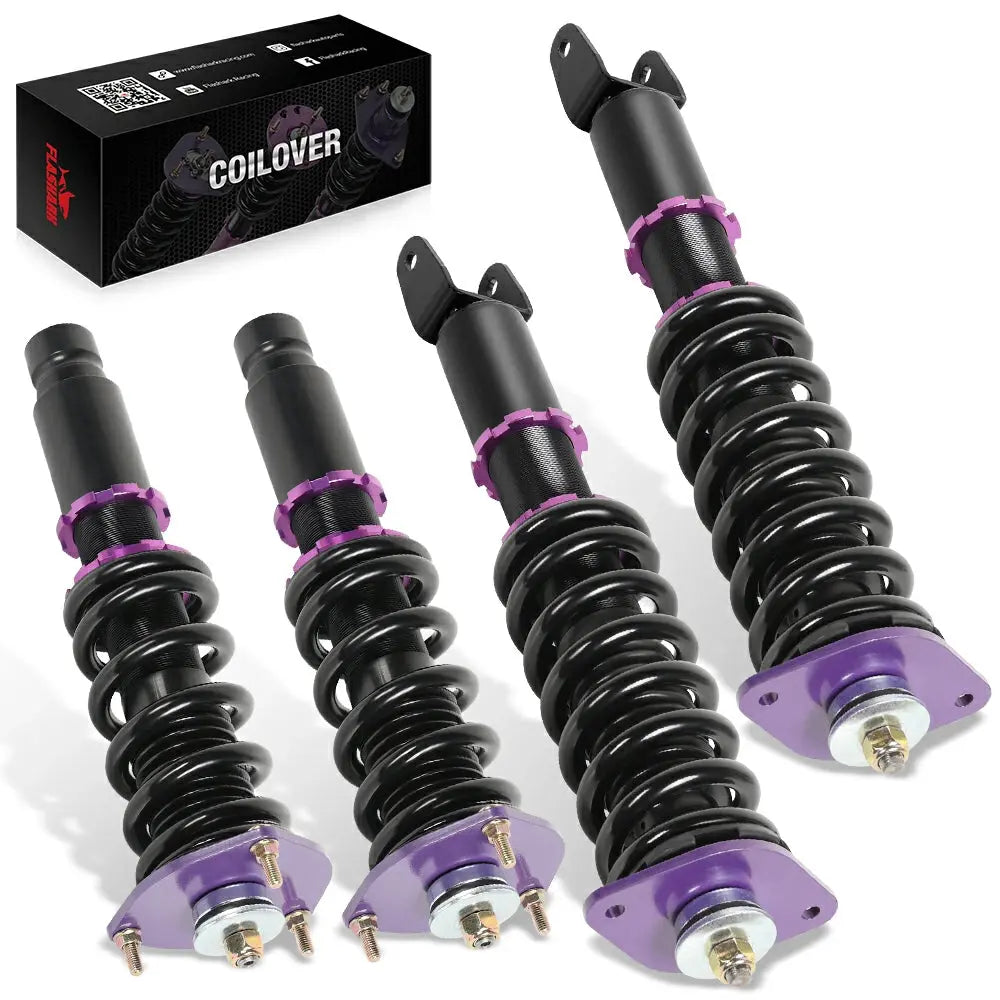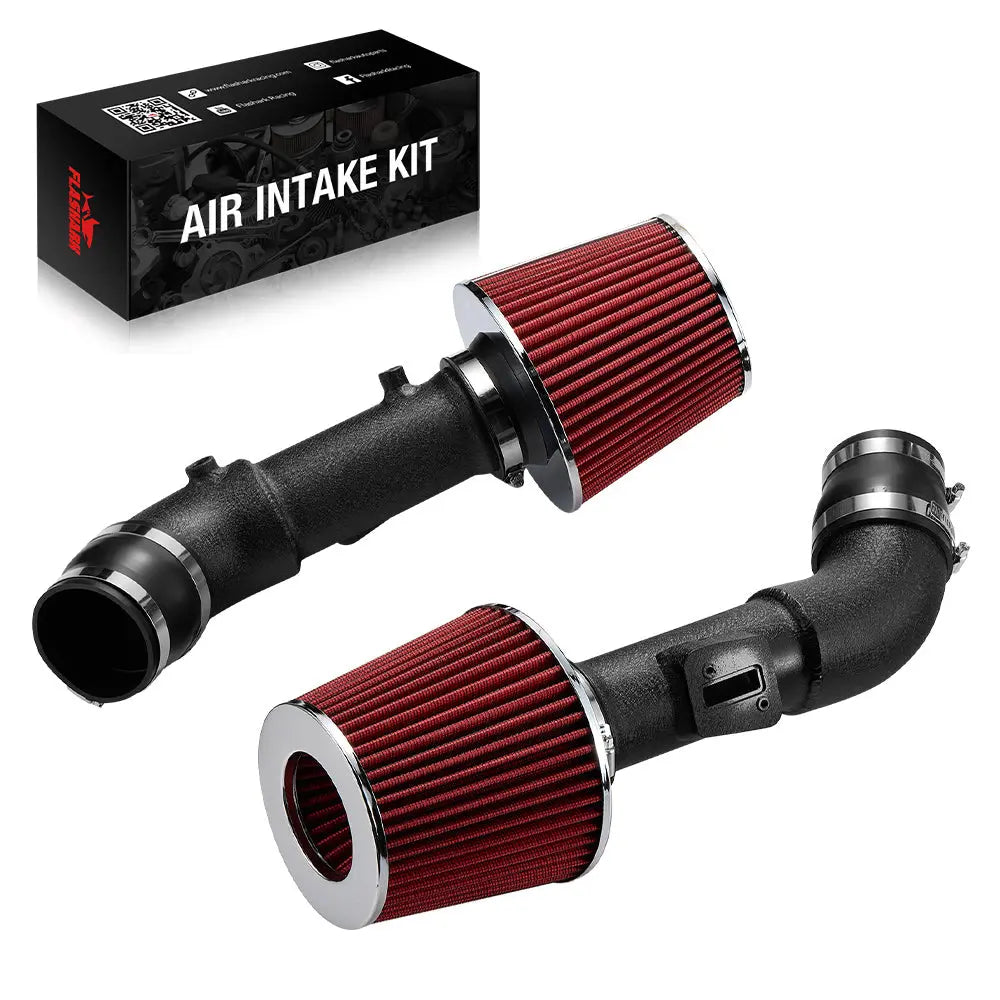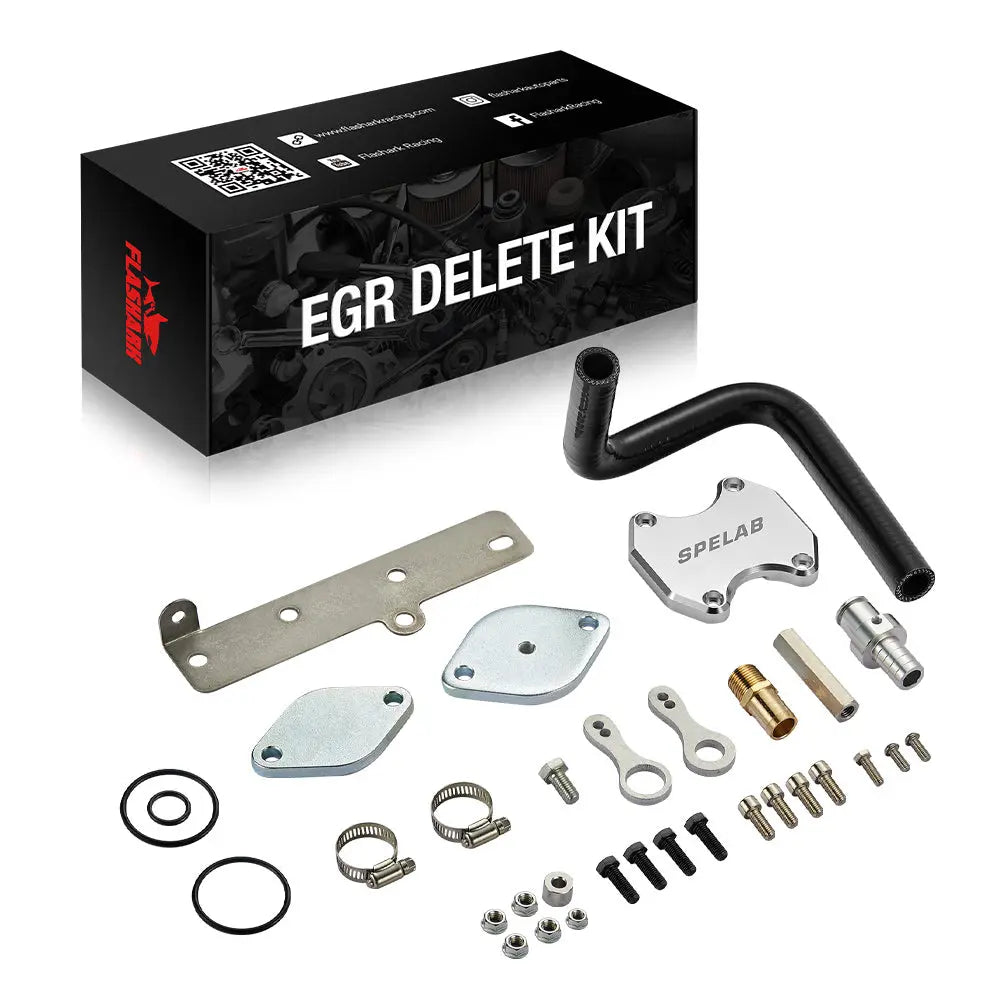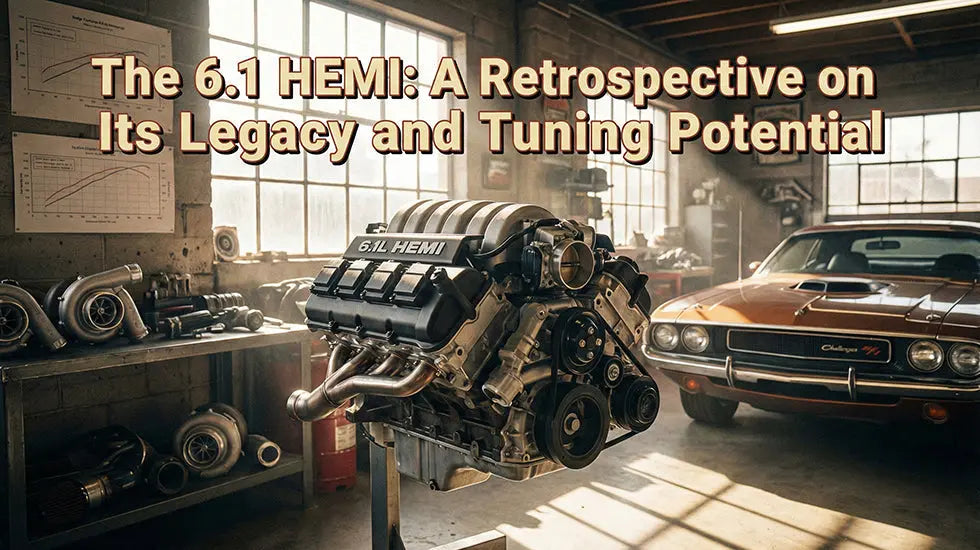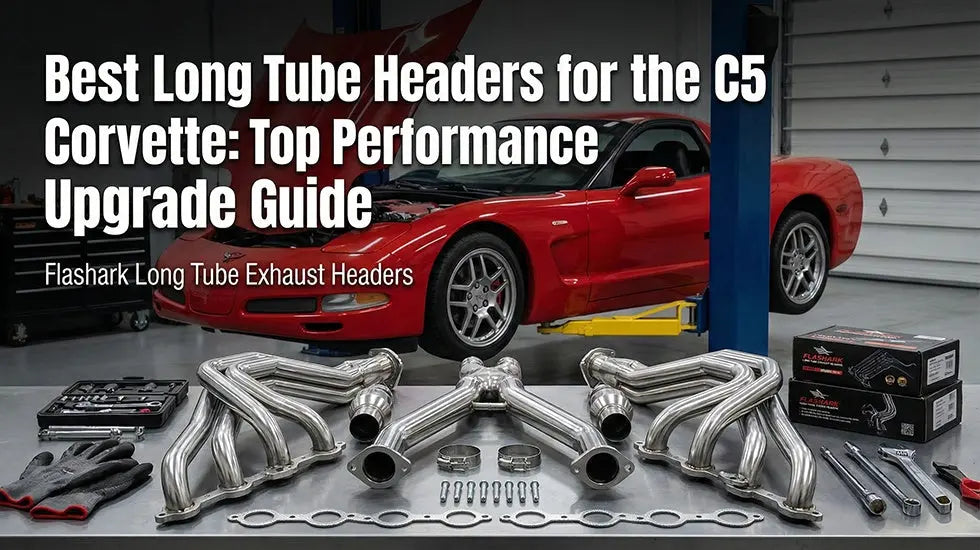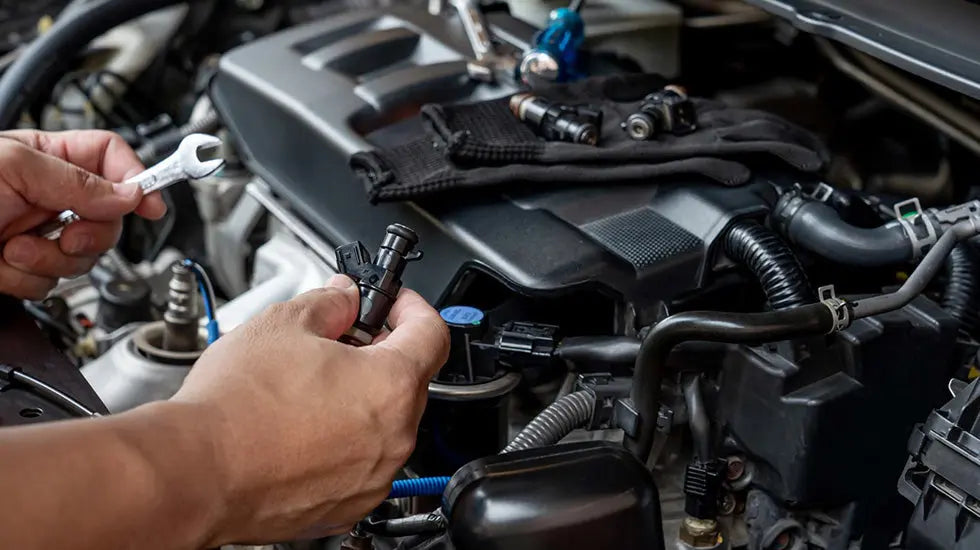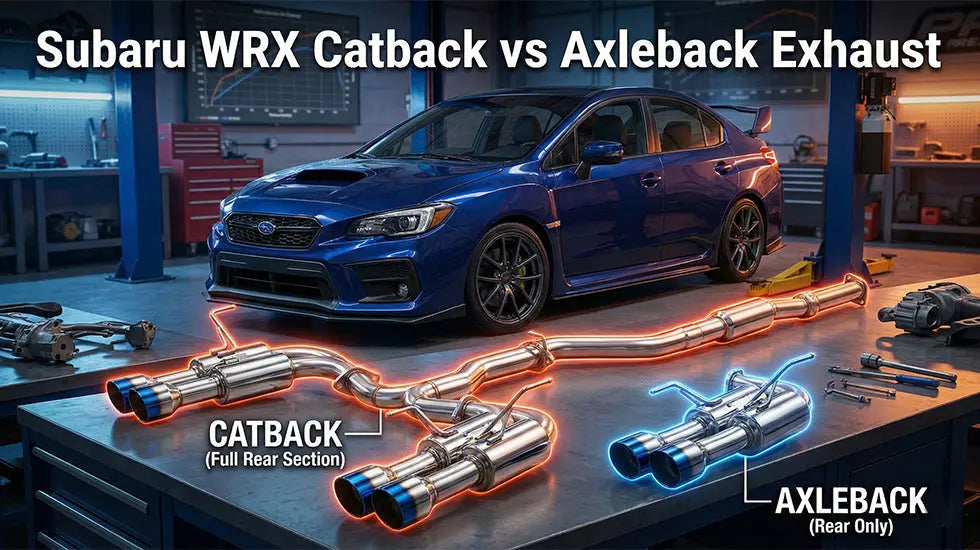El motor Powerstroke de 6.7 litros es una opción popular para las camionetas Ford, en particular para la serie Super Duty, incluyendo los modelos F-250 y F-350. Conocido por su robustez y fiabilidad, este motor se ha convertido en la opción predilecta tanto para trabajos pesados como para mejoras de rendimiento. Con una cilindrada de 6.7 litros, el motor Powerstroke ofrece una capacidad de remolque, una potencia y un par motor excepcionales, lo que lo hace ideal para quienes exigen potencia y rendimiento a sus vehículos.
Características principales del motor Powerstroke 6.7
Especificaciones del motor
El motor Powerstroke 6.7 es reconocido por sus impresionantes especificaciones técnicas, que contribuyen a su alto rendimiento. A continuación, se detallan los parámetros clave del motor:
| Especificación | Detalles |
|---|---|
| Tipo de motor | V8 diésel turboalimentado |
| Desplazamiento | 6,7 litros |
| Diámetro x carrera | 4,11 pulgadas x 4,25 pulgadas (104,4 mm x 107,95 mm) |
| Relación de compresión | 16.2:1 |
| Caballo de fuerza | 450 CV a 2.800 rpm |
| Esfuerzo de torsión | 935 lb-ft a 1600 rpm |
| Turbocompresor | Turbocompresor de geometría variable BorgWarner |
| Tipo de combustible | Diesel |
| Sistema de combustible | Inyección directa de riel común (CRDI) |
| Sistema de enfriamiento | Refrigeración líquida con radiador de alto flujo |
| Presión de inyección | 29.000 psi |
| Presión máxima de sobrealimentación | 40 psi |
| Peso | Aproximadamente 1.000 libras (454 kg) |
El El motor 6.7 Powerstroke está diseñado para proporcionar un par motor y una potencia superiores, especialmente en camiones de servicio pesado. Destaca en remolque y transporte gracias a su alto par motor de 935 lb-ft a tan solo 1600 rpm, ideal para mover cargas pesadas. El sistema de inyección directa common rail (CRDI) del motor permite un suministro de combustible más preciso, mejorando la eficiencia y la potencia.
En cuanto a la turboalimentación, el motor utiliza un turbocompresor de geometría variable BorgWarner , que mejora la respuesta del turbo y reduce el retardo, lo que ayuda al motor a funcionar con mayor eficiencia a bajas y altas RPM. Con una relación de compresión de 16,2:1 , el motor 6.7 Powerstroke está optimizado para una mayor durabilidad y eficiencia, lo que garantiza que pueda afrontar las exigencias tanto de la conducción profesional como de alto rendimiento.
Aplicaciones
Este motor se encuentra comúnmente en camionetas Ford Super Duty, como las F-250 , F-350 y F-450 , así como en diversos vehículos comerciales. Es especialmente ideal para aplicaciones que requieren capacidad de remolque, como el transporte de remolques, vehículos recreativos y equipo pesado.
Ventajas del motor 6.7 Powerstroke
El motor Powerstroke 6.7 destaca en el competitivo mercado de los motores diésel gracias a su combinación de potencia, eficiencia y durabilidad. Ya sea que esté remolcando una carga pesada o conduciendo por la carretera, el Powerstroke 6.7 ofrece varias ventajas que lo convierten en la mejor opción para las camionetas Ford Super Duty.
1. Impresionante potencia y par motor
Una de las principales razones por las que el 6.7 Powerstroke es tan popular es su excepcional potencia y par motor. Con hasta 450 caballos de fuerza y un impresionante par motor de 935 lb-pie , este motor ofrece una increíble capacidad de remolque y transporte. Su alto par motor a bajas RPM lo hace ideal para aplicaciones de servicio pesado, como remolcar remolques, vehículos recreativos o equipo pesado, así como para superar pendientes pronunciadas y terrenos difíciles.
2. Durabilidad y longevidad
El motor Powerstroke 6.7 está diseñado pensando en la durabilidad, lo que lo hace perfecto para uso intensivo a largo plazo. Fabricado con un robusto bloque de hierro fundido y un cigüeñal de acero forjado , el motor puede soportar las altas tensiones que se producen durante tareas exigentes como remolcar y conducir fuera de carretera. Estas características contribuyen a su longevidad y a su capacidad para funcionar sin problemas en condiciones difíciles.
Muchos propietarios informan que con el mantenimiento adecuado, el motor Powerstroke 6.7 puede funcionar durante varios cientos de miles de millas sin problemas mayores, lo que lo convierte en una opción confiable para quienes buscan una camioneta que pueda recorrer largas distancias.
3. Sistema avanzado de turbocompresor
El turbocompresor de geometría variable BorgWarner, utilizado en el motor 6.7 Powerstroke, mejora significativamente el rendimiento. A diferencia de los turbocompresores tradicionales, este sistema ajusta el ángulo de los álabes del turbo para optimizar el flujo de escape a diferentes velocidades del motor. Esto se traduce en un menor retardo del turbo y una entrega de potencia más sensible, especialmente al acelerar desde parado o al remolcar cargas pesadas. La turboalimentación avanzada también mejora la eficiencia del combustible y la respuesta del motor, facilitando la conducción tanto a baja como a alta velocidad.
4. Eficiencia de combustible
A pesar de su alto rendimiento, el 6.7 Powerstroke está diseñado para ofrecer un consumo de combustible relativamente bueno para un motor diésel de su tamaño. El sistema de inyección directa common rail (CRDI) permite un suministro de combustible más preciso, optimizando el proceso de combustión y mejorando la eficiencia general del combustible. Esto se traduce en menos paradas en gasolineras durante viajes largos por carretera o al transportar cargas pesadas, lo que convierte al 6.7 Powerstroke en una opción práctica tanto para el trabajo como para el ocio.
5. Funcionamiento suave y silencioso
Los motores diésel suelen asociarse con un funcionamiento ruidoso y brusco, pero el 6.7 Powerstroke ha mejorado considerablemente en este aspecto. Gracias a su avanzada ingeniería, que incluye un turbocompresor silencioso y un aislamiento acústico mejorado, el 6.7 Powerstroke funciona con mayor suavidad y silencio que muchos de sus competidores. Esto se traduce en una experiencia de conducción más cómoda, especialmente en viajes largos o a altas velocidades.
6. Cumplimiento de emisiones (con actualizaciones opcionales)
El motor 6.7 Powerstroke está equipado con un sistema de control de emisiones que incluye componentes como el DPF (filtro de partículas diésel) y el sistema EGR (recirculación de gases de escape) para cumplir con estrictas normas ambientales. En regiones con normativas de emisiones rigurosas, esto ayuda a garantizar que el motor cumpla con la legislación vigente. Además, con la instalación de un kit de eliminación de emisiones para el 6.7 Powerstroke , los propietarios pueden optar por eliminar algunos de estos componentes para mejorar el rendimiento, aunque es importante conocer las normativas locales antes de realizar dichas modificaciones.
7. Capacidad de remolque excepcional
La combinación de alto torque y potencia del motor Powerstroke 6.7 resulta en una de las mejores capacidades de remolque disponibles en un motor diésel. Dependiendo del modelo y la configuración, los camiones con el Powerstroke 6.7 pueden remolcar más de 13667 kg (30,000 lb), lo que lo hace perfecto para quienes transportan regularmente remolques grandes, botes u otros equipos pesados. El rendimiento del motor está diseñado para manejar remolques de larga distancia con facilidad, ofreciendo potencia y estabilidad en la carretera.
8. Tecnología de vanguardia
Ford ha incorporado diversas tecnologías avanzadas al motor Powerstroke 6.7 para mejorar el rendimiento y la fiabilidad. Características como la sincronización variable de válvulas y el diseño de doble árbol de levas en cabeza mejoran la eficiencia del motor tanto a altas como a bajas revoluciones. La capacidad del turbocompresor para ajustarse en tiempo real a las condiciones cambiantes se traduce en una mayor eficiencia de combustible y un menor retardo del turbo. Además, el uso de materiales de alta resistencia en componentes clave, como el cigüeñal y el bloque motor, garantiza que el motor pueda soportar las tensiones extremas que soporta durante el remolque y el transporte.
La estructura del motor Powerstroke 6.7
El motor 6.7 Powerstroke es una máquina sofisticada y de alta ingeniería, diseñada para satisfacer las rigurosas exigencias tanto de los entusiastas del rendimiento como de los profesionales que requieren un rendimiento de alto rendimiento. Comprender sus componentes estructurales es fundamental para apreciar su durabilidad y potencia. A continuación, desglosamos los principales elementos estructurales del motor 6.7 Powerstroke.

1. Bloque del motor
El bloque motor es la base del motor Powerstroke 6.7. Fabricado en hierro fundido de alta resistencia, alberga componentes cruciales como el cigüeñal, los pistones y las camisas de los cilindros. Su robusta construcción garantiza que el motor pueda soportar las presiones extremas generadas durante un rendimiento de alta potencia, como al remolcar cargas pesadas o al acelerar rápidamente.
2. Culata
La culata del 6.7 Powerstroke está fabricada en aluminio, un material ligero y resistente. Contiene las válvulas de admisión y escape, el árbol de levas y los inyectores de combustible. El 6.7 Powerstroke emplea un diseño de doble árbol de levas en cabeza (DOHC) , que mejora la sincronización de válvulas y ayuda a lograr una mayor eficiencia tanto a bajas como a altas RPM.
3. Sistema de turbocompresor
El turbocompresor desempeña un papel fundamental en el rendimiento del motor 6.7 Powerstroke. El motor utiliza un turbocompresor de geometría variable BorgWarner , que ajusta el ángulo de sus álabes para controlar el flujo de gases de escape. Esto permite que el turbocompresor gire más rápido y funcione eficientemente tanto a bajas como a altas revoluciones, reduciendo el retardo del turbo y aumentando la capacidad de respuesta.
4. Cigüeñal y pistones
El cigüeñal está fabricado en acero forjado, un material conocido por su resistencia y capacidad para soportar fuerzas extremas. Su función es convertir el movimiento lineal de los pistones en potencia rotacional, que se transmite a la transmisión y a las ruedas. Los pistones del motor 6.7 Powerstroke están diseñados para soportar altas presiones de compresión, lo que permite que el motor genere una potencia y un par considerables.
5. Sistema de combustible
El sistema de combustible del 6.7 Powerstroke es un sistema de inyección directa common rail (CRDI) . Este sistema suministra combustible a presiones extremadamente altas (hasta 29,000 psi) a los inyectores, que lo inyectan con precisión en la cámara de combustión. Esta alta precisión optimiza el proceso de combustión, lo que contribuye a la potencia del motor y a la eficiencia del combustible.
6. Sistema de refrigeración
El sistema de refrigeración es vital para mantener la temperatura de funcionamiento del motor, especialmente durante el uso intensivo. El 6.7 Powerstroke utiliza un radiador de alto flujo y refrigerante líquido para regular la temperatura del motor, lo que garantiza que no se sobrecaliente durante periodos prolongados de carga pesada o conducción de alto rendimiento.
7. Sistema de escape
El sistema de escape del motor 6.7 Powerstroke incluye varios componentes diseñados para reducir las emisiones y mejorar la eficiencia del motor. Estos incluyen el DPF (filtro de partículas diésel) y el sistema EGR (recirculación de gases de escape), aunque estos componentes a veces se eliminan en mejoras de rendimiento como el kit de eliminación del 6.7 Powerstroke . El sistema de escape ayuda a gestionar la potencia del motor y garantiza el control de las emisiones.
Mejoras de rendimiento para el 6.7 Powerstroke
Kit de eliminación de Powerstroke 6.7
El kit de eliminación de emisiones Powerstroke 6.7 es una modificación de posventa que elimina ciertos componentes relacionados con las emisiones, como el filtro de partículas diésel (DPF) y el sistema de recirculación de gases de escape (EGR). Esta mejora es popular entre los entusiastas que buscan aumentar el rendimiento y la eficiencia del motor. Al eliminar estas restricciones, el motor experimenta menos contrapresión, lo que puede resultar en una mejora notable de la potencia y el par motor.
Sin embargo, es importante tener en cuenta que el uso de un kit de eliminación podría no ser legal en algunos estados debido a las estrictas regulaciones ambientales. Siempre consulte las leyes locales sobre emisiones antes de considerar esta actualización.

6.7 Tubo de bajada Powerstroke
Un tubo de escape Powerstroke 6.7 es otra mejora esencial para quienes buscan optimizar el rendimiento de su motor. Este tubo dirige los gases de escape del turbocompresor al sistema de escape y contribuye significativamente a mejorar su flujo. Un tubo de escape de alto flujo reduce el retardo del turbo, lo que permite que el motor acelere más rápido y genere más potencia a bajas revoluciones. Esta mejora también contribuye a una mejor eficiencia de combustible y una aceleración más sensible.
Al elegir un tubo de bajada para su motor Powerstroke 6.7, asegúrese de seleccionar uno que esté diseñado para su año y modelo específicos para garantizar un ajuste adecuado y un rendimiento óptimo.

Kit de admisión de aire frío Powerstroke 6.7
Actualizar el kit de admisión de aire frío Powerstroke 6.7 es una de las maneras más efectivas de mejorar el flujo de aire hacia el motor. Las admisiones de aire frío reemplazan el restrictivo filtro de aire y colector de admisión de fábrica por un sistema más grande y eficiente que permite que el motor respire mejor. Al aumentar la cantidad de aire frío y denso que entra al motor, la admisión de aire frío ayuda a mejorar la combustión, lo que resulta en mayor potencia y par motor.
Muchos kits de admisión de aire frío también incluyen filtros de alto flujo que ayudan a atrapar más suciedad y residuos, manteniendo un flujo de aire óptimo. Instalar esta mejora también puede mejorar el ahorro de combustible y la respuesta del acelerador, especialmente al acelerar con fuerza.

6.7 Depósito de refrigerante Powerstroke
El depósito de refrigerante del motor Powerstroke 6.7 desempeña un papel crucial en el mantenimiento de la temperatura del motor. Este depósito almacena el exceso de refrigerante que circula por el motor para evitar el sobrecalentamiento. Si el depósito se agrieta o daña, puede provocar fugas de refrigerante, lo que podría dañar el motor por sobrecalentamiento.
El mantenimiento y la sustitución regulares del depósito de refrigerante son esenciales para el buen funcionamiento del motor. Considere la posibilidad de cambiar a un depósito de refrigerante duradero y de alta calidad para mejorar la durabilidad y la eficiencia del sistema de refrigeración de su motor.

Mantenimiento y solución de problemas del motor Powerstroke 6.7
Problemas comunes y diagnóstico de problemas
Incluso con un mantenimiento adecuado, el motor Powerstroke 6.7 puede presentar problemas con el tiempo. Los problemas más comunes incluyen problemas con el sistema EGR, fallas del turbocompresor y problemas con los inyectores de combustible. Por ejemplo, una válvula EGR obstruida puede reducir la eficiencia del motor y aumentar las emisiones. Una falla del turbocompresor puede provocar un bajo rendimiento del motor y un aumento de la emisión de humo. Inspeccionar regularmente estos componentes ayudará a garantizar la longevidad del motor.
Consejos de mantenimiento de rutina
El mantenimiento rutinario es fundamental para el rendimiento del motor Powerstroke 6.7. Los cambios regulares de aceite, la sustitución de los filtros de combustible y la inspección del sistema turbo son clave para prevenir problemas en el futuro. Monitorear los niveles de refrigerante y revisar el radiador y el depósito de refrigerante para detectar fugas es esencial para prevenir el sobrecalentamiento.
Actualizaciones y reemplazos
Al actualizar componentes como la toma de aire frío o el tubo de escape, conviene sustituir las piezas antiguas o desgastadas para garantizar la compatibilidad y evitar problemas de rendimiento. La inspección periódica del kit de desmontaje del Powerstroke 6.7 (si está instalado) y de los sistemas de escape ayudará a evitar posibles problemas legales y ambientales.
Consideraciones legales y ambientales para el motor Powerstroke 6.7
Leyes de emisiones y cumplimiento
El uso de Los kits de eliminación y ciertos componentes de posventa pueden infringir las leyes de emisiones en algunas regiones, especialmente en estados como California. Es importante mantenerse informado sobre las leyes locales relativas a las modificaciones relacionadas con las emisiones para evitar sanciones legales. Si bien las mejoras de rendimiento son atractivas, se debe considerar cuidadosamente el impacto ambiental y las consecuencias legales antes de realizar modificaciones en su motor Powerstroke 6.7.
Impacto ambiental de las modificaciones
Si bien la eliminación de componentes restrictivos como el DPF y el sistema EGR puede mejorar el rendimiento, también puede aumentar la cantidad de partículas emitidas a la atmósfera. Es fundamental sopesar los beneficios de las mejoras de rendimiento frente al posible impacto ambiental, especialmente en regiones con normativas de emisiones estrictas.
Conclusión: Cómo maximizar el potencial del motor Powerstroke 6.7
El motor Powerstroke 6.7 es potente y confiable, con un gran potencial para mejoras de rendimiento. Al incorporar piezas como el kit de eliminación, el tubo de escape, el kit de admisión de aire frío y el depósito de refrigerante, puede mejorar el rendimiento, la eficiencia y la vida útil de su motor. Sin embargo, es importante mantenerse informado sobre las leyes locales de emisiones y adoptar un enfoque equilibrado al realizar modificaciones de rendimiento.
El mantenimiento regular y las actualizaciones adecuadas pueden ayudarle a aprovechar al máximo el potencial de su motor Powerstroke 6.7, garantizando que siga siendo un motor potente durante años. Siempre consulte con profesionales al realizar modificaciones importantes y asegúrese de que sea compatible con su vehículo para obtener los mejores resultados.

